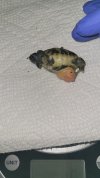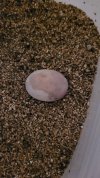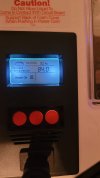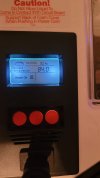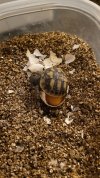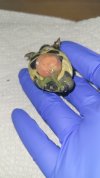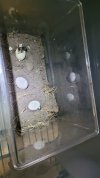I pulled 3 eggs from a nest in April (I live in Texas a bit north of Houston) because the area was flooding. The eggs were very wet when I pulled them and they looked like they had just begun to chalk.
I stuck them in the incubator and they began to develop just fine. Last week the first one hatched and it is still doing just fine. Saturday night the second started to hatch. I checked it Sunday morning and it had made it halfway out but was no longer alive. I just found the 3rd baby also in the same way. The 2 that died during exist still had not absorbed their yolk sac whereas the first one had fully absorbed it's sac by the time it was fully out (which happened overnight).
For these eggs, i used an incubator from tractor supply and vermiculite with a 1:1 of water and vermiculite. I added water as needed to preventthe vermiculite from drying out. I also keep open containers of water in the incubator. For my previous succssful hatchlings last year I used a tote inside of a larger tote with a layer of water on the bottom. I figured this incubator set up would be better, but maybe I should be doing something better? I don't seem to be having success with these. I had another clutch in there from a different female. Two out of 3 never chalked. The one remaining has been in there since end of February but I think it's no longer viable either. It developed fully but the egg seems like it's going bad (included pic of that one too).
I'm attaching some references pictures of the babies that didn't make it. Once realizing they weren't alive, I did extract the rest of the egg to see if I could find anything wrong.
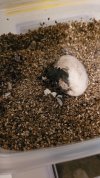
I stuck them in the incubator and they began to develop just fine. Last week the first one hatched and it is still doing just fine. Saturday night the second started to hatch. I checked it Sunday morning and it had made it halfway out but was no longer alive. I just found the 3rd baby also in the same way. The 2 that died during exist still had not absorbed their yolk sac whereas the first one had fully absorbed it's sac by the time it was fully out (which happened overnight).
For these eggs, i used an incubator from tractor supply and vermiculite with a 1:1 of water and vermiculite. I added water as needed to preventthe vermiculite from drying out. I also keep open containers of water in the incubator. For my previous succssful hatchlings last year I used a tote inside of a larger tote with a layer of water on the bottom. I figured this incubator set up would be better, but maybe I should be doing something better? I don't seem to be having success with these. I had another clutch in there from a different female. Two out of 3 never chalked. The one remaining has been in there since end of February but I think it's no longer viable either. It developed fully but the egg seems like it's going bad (included pic of that one too).
I'm attaching some references pictures of the babies that didn't make it. Once realizing they weren't alive, I did extract the rest of the egg to see if I could find anything wrong.


